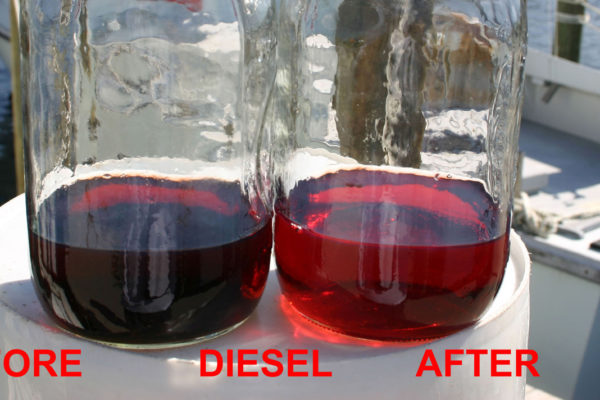In an era where environmental concerns loom large, ultra-low-sulfur fuel (ULS diesel) has emerged as a pivotal solution for reducing harmful emissions from diesel engines. Introduced in 2007, this refined fuel type has transformed industries reliant on diesel while simultaneously fostering a more sustainable future. This article delves into the intricate details surrounding ultra-low-sulfur fuel, elucidating its significance, advantages, and impact on both ecology and human health.
The Genesis of Ultra-Low-Sulfur Diesel
The transition to ultra-low-sulfur diesel was not a spontaneous decision but rather a response to burgeoning environmental regulations and public demand for cleaner fuel options. As scientific research illuminated the detrimental effects of sulfur emissions on air quality and public health, regulatory bodies recognized an imperative to act. The U.S. Environmental Protection Agency (EPA), recognizing the potential for substantial reductions in emissions, instituted stringent guidelines that dictated a dramatic reduction in the allowable sulfur content in diesel fuel.
Prior to 2007, traditional diesel fuels contained up to 500 parts per million (ppm) of sulfur, a level that contributed to significant air pollution. With the introduction of ultra-low-sulfur diesel, the sulfur content was drastically reduced to just 15 ppm, a substantial leap towards cleaner combustion. The transition period was marked by robust dialogues among industry stakeholders, fuel producers, and environmental organizations, all aiming to carve out a sustainable path forward.
The Environmental Impact of ULS Diesel
One of the paramount advantages of ultra-low-sulfur diesel is its ability to drastically mitigate harmful emissions. Sulfur oxides (SOx) produced from high-sulfur diesel can exacerbate respiratory ailments, contribute to acid rain, and influence climate change. By adopting ULS diesel, diesel engines produce lower volumes of these toxic pollutants, thereby improving air quality.
This shift didn’t merely reflect regulatory compliance; it marked a substantial enhancement in public health. Epidemiological studies have consistently demonstrated that reduced exposure to sulfur oxides and particulate matter correlates with lower instances of asthma, lung cancer, and cardiovascular diseases. The adoption of ULS diesel is a clear reflection of the industry’s commitment to public welfare and environmental stewardship.
Performance and Efficiency: A Dual Advantage
Critics often voice concerns that environmental regulations may compromise performance. However, ultra-low-sulfur diesel has proven that ecological responsibility and engine efficiency are not mutually exclusive. In fact, many diesel engines designed to utilize ULS diesel run more efficiently due to cleaner combustion. Reduced sulfur content facilitates the optimal performance of advanced after-treatment systems, such as diesel particulate filters (DPFs) and selective catalytic reduction (SCR) systems.
These after-treatment technologies are essential in the fight against emissions. When paired with ULS diesel, they significantly reduce nitrogen oxides (NOx) emissions and particulate matter—key contributors to smog and health hazards. Consequently, fleets utilizing ULS diesel not only comply with environmental standards but also capitalize on improved fuel efficiency and extended engine life.
Benefits to the Transportation Sector
The transportation sector, particularly freight and public transport systems, stands to benefit immensely from the adoption of ultra-low-sulfur diesel. Shipping and logistics companies have embraced this cleaner fuel as it allows them to align with evolving regulations while enhancing their corporate social responsibility profiles. The integration of ULS diesel can lead to cost savings on emissions-related regulatory compliance and penalties.
Moreover, municipalities are increasingly adopting ULS diesel in public transit. This reduces the environmental footprint of public transport systems, which are often among the largest contributors to urban pollution. By committing to ultra-low-sulfur diesel, cities can present themselves as progressive and health-conscious, fostering a better quality of life for their inhabitants.
Challenges and Future Perspectives
Looking forward, the future of ultra-low-sulfur fuel appears bright. Ongoing advancements in engine technology and after-treatment systems signal an ongoing commitment to cleaner diesel solutions. Additionally, as the industry navigates toward renewable diesel and other alternative fuels, ULS diesel will likely serve as a bridge towards sustainable energy solutions. The integration of biodiesel with ultra-low-sulfur complexities could further enhance emission reductions while promoting the use of renewable resources.
Conclusion: A Quantum Leap for Diesel
The introduction of ultra-low-sulfur diesel has undeniably marked a quantum leap in the evolution of diesel fuels. By adhering to lower sulfur content standards imposed in 2007, industries have not only complied with regulatory mandates but have also embraced a path of sustainable growth. The myriad benefits—ranging from enhanced public health and environmental preservation to operational efficiency—underscores the critical role that ULS diesel plays in the broader narrative of transitioning to cleaner energy solutions.
The positive ramifications of ULS diesel reach far beyond the chemical composition of the fuel itself. They encompass a collective commitment from sectors and communities alike to forge a cleaner, healthier, and more sustainable world. As we journey further into the future, the onus remains on industries, individuals, and governments alike to champion innovations that promise a harmonious coexistence with our planet.
